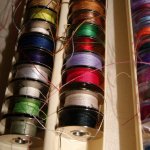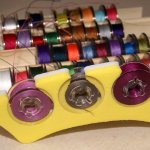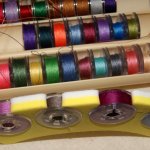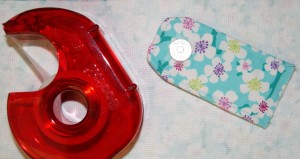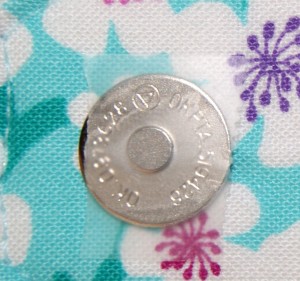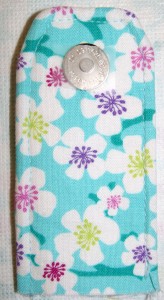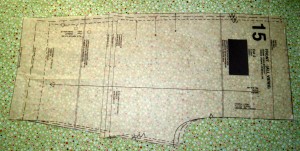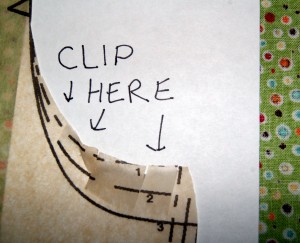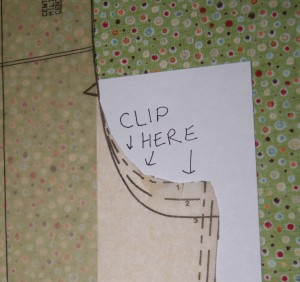If you are like me, I do a TON of sewing especially this time of the year!! One thing that always seems to happen to me is that I am forever chasing my sewing machine foot pedal all around because it is ALWAYS moving out of my comfort zone for sewing!! I have tried placing self-adhesive felt pads on the bottom of my pedal without much success and have even used sandpaper stickers on the underneath side of the pedal and I am still always having to move it back into place. However, these sandpaper stickers work super on your quilting rulers to help keep them from sliding around!! Sorry, I digress. Anyways, I have designed a platform that I place my sewing machine foot pedal on and it really seems to help keep it from moving all around. Believe you me it is nothing fancy and you probably have these items around your house so NO COST which is right up my alley. This is what I presently use: 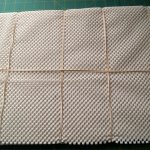
 See I told you it is nothing fancy ~ ooooh and pardon all my thread explosions LOL!! I have taken a couple of card board mailing boxes and covered them in the rubberized shelf lining material with some extra-large rubber bands to hold it all together. The boxes I used are about 16″ wide by 11″ long and I covered three of them for some thickness and height. You see I am also vertically challenged so it works better for me to have my foot pedal raised up a little bit. My foot pedal will still move around ever so slightly but it doesn’t travel way out of reach. This works for me and keeps me from getting frustrated 🙂 It would be great if you could share your ideas that you use to help with this issue!!
See I told you it is nothing fancy ~ ooooh and pardon all my thread explosions LOL!! I have taken a couple of card board mailing boxes and covered them in the rubberized shelf lining material with some extra-large rubber bands to hold it all together. The boxes I used are about 16″ wide by 11″ long and I covered three of them for some thickness and height. You see I am also vertically challenged so it works better for me to have my foot pedal raised up a little bit. My foot pedal will still move around ever so slightly but it doesn’t travel way out of reach. This works for me and keeps me from getting frustrated 🙂 It would be great if you could share your ideas that you use to help with this issue!!
HAPPY CREATING!!
Disclaimer: This post contains affiliate links – “Commissions Earned”

